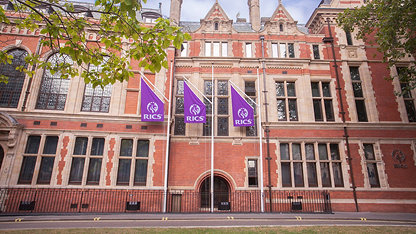When you're running a small business, it can be hard to put together the perfect mix of skills and people for the work you have now, let alone for challenges of the future. These five industry pros explain how to get the balance just right.
"Identify what your employees are good at and build on this"
James Burkitt MRICS is founder of chartered environmental surveyor Aviron Associates, Oxfordshire
Because raising headcount is a risk, many small business owners will be familiar with just getting by – riding out peaks and troughs. The danger is that people get so busy, they do everything rather than what they're best at, or want to do more of.
We hit this position recently, so I decided to bring in someone specifically to provide administrative support. This simple change will free people up to have honest conversations about what they're really good at, what new skills they want or need to acquire, and how we as a business can support them. Now, we can create a skills audit of everyone, and build the business case for training them according to how we see our market developing.
Our business provides land insights to civil and structural engineers, so it may well be that we next hire someone in this field, to grow our business by offering more services to existing clients. This way, we won't trample on our existing employees' current skillsets. We'll train from the bottom up, and in doing so people will see where they fit, and what skills they need to progress.
This is also a good way to protect our uninterrupted growth. We haven't lost any staff since launching in 2008, but it's bound to happen at some point. At least this way, we'll have created a formal skills structure that new recruits will be able to slip into.

Identifying and building on your existing employee skill set is a sure fire way to progression, states James Burkitt
"Anticipate emerging markets and hire ahead of need"
Dylan Williams MRICS is partner at Swansea-based chartered surveyor and estate agent, Rees Richards
Hiring when you need people is too late. Sometimes you have to take the plunge and recruit ahead of time, to get ahead of your competition and capitalise on emerging markets. In our region we noticed that the markets for second homes and commercial coastal properties were beginning to take off.
So we decided to hire in advance of work coming in and expand into these areas. It's why we took on two new hires in June, which is a big commitment for us, given the business is still only 20 people.
What we've now done is effectively create a new department. Some might say that's too much of a risk, but for us it's an informed decision. We like to plan roughly 18 months to two years ahead, and work out what our skill requirements might be, including what resourcing constraints might prevent us from achieving this. For example, our location outside the main metropolitan areas makes attracting talent challenging. This is another reason we wanted to hire our new people as soon as possible, in case it took time to find them.
To ensure the talent we want is attracted to us, we've looked at our benefits package, too. Our new hires will, for instance, be able to enjoy a profit share on new fees.
Firms have to move with the times, and respond to new markets as they stand out, so for us, these hires formed part of our future-scoping exercise.
"Focus on retention to build your pool of talent at every level"
Calum Campbell MRICS is managing partner at chartered surveyor Graham & Sibbald, Glasgow
Futureproofing for skills is as much about focusing on retention as it is about acquisition of skills, and for us this means being able to provide support for the career progression staff want. Our aim is that every person in the firm should have an appropriate career path and opportunity to achieve their full potential, attaining the right level within the firm for them.
To help this, we've created a new tier of progression: director-level roles, which sit between associate and partner, and come with new training and responsibilities – and bonus systems. We wouldn't have faced the threat of people leaving had we not done it, but it was more to show people how they could move up. It's only been going a few months, but already eight people have been promoted, which then creates opportunities for those below them to move up.
We try to ensure everyone gets an "appropriate landing" in the business – giving them the career best suited to their skills. Because having roles for people to move into at the top creates lots of internal movement, we're naturally building talent pools throughout the organisation. Having these clear structures is a great way for us to manage our succession planning.
This attention is also repeated at entry level, too, with graduate-entry routes and pathways for development available to people if they want it as soon as they join.
“Futureproofing for skills is as much about focusing on retention as it is about acquisition of skills ”
Calum Campbell MRICS
Managing Partner at Graham and Sibbald, Glasgow
"Get your office culture right, and the staff will follow"
Rennie Dalrymple MRICS is managing partner at construction consultant Bruceshaw in London
Culture is an often-ignored aspect of the skills conversation, but one that we believe feeds into retention and how our people are engaged and want to grow.
Three years ago we did some major work on the way we wanted our people to behave – how they spoke to clients, colleagues and peers – as the basis for how we wanted to move forward as a business. In return, we better codified our side of the bargain for achieving this, including providing partner mentoring, coaching, and training support to help people reach their career goals.
We've also enhanced our maternity/paternity offering, and done more to promote flexible working, which is having a big impact on morale and engagement. In turn we've updated our organisational governance. Now, all service lines meet monthly to discuss how the business strategy is going, and what we need from a skills point of view. It forces us to talk about talent pipelines – for instance do we do more training, or bring in new hires - to enable us to achieve our plans.
All of this is having a positive impact on talent attraction, induction (our values are there for all new hires to see), and retention. Churn is down compared with three years ago. By having governance backed up with clear skills-based policies, we feel we are more agile and adaptable to change because we're identifying our skills needs early.

Rennie Dalrymple MRICS believes that curating a forward-thinking company culture feeds into retention and how staff want to grow
"Choose an ownership model that gives employees a stake"
Robert Postlethwaite is MD of share scheme and employee ownership specialist Postlethwaite in London
The way a business is structured has a huge influence on its ability to futureproof itself, as the setup can either help or hinder efforts to attract and retain talent.
Making your employees owners in the business – through share schemes, employee trusts or direct ownership models turns passive staff into those who feel they have a real stake in the future direction of the business. Surveyors already have quasi-ownership structures – featuring partner levels – and therefore have some experience at this already.
The benefit of employee ownership is that it radically boosts engagement. Edinburgh Napier University found that 80% of employee-owner staff say they feel a sense of achievement from their jobs because they are stakeholders.
However, it's a model that requires preparation. A shift of legal entity alone won't create change. Employee ownership needs to be believed in by leaders as the right thing to do. Thought will also need applying to the details – for instance whether employees get regular dividends, or shares they can sell when they leave.
Get the detail right and it can be a way of futureproofing against talent loss. It's no surprise to me that employee ownership is the fastest growing form of business ownership in the UK, now expanding at a rate of 10% a year.
- This article originally appeared in the Start-Up issue of Modus (October 2019)











